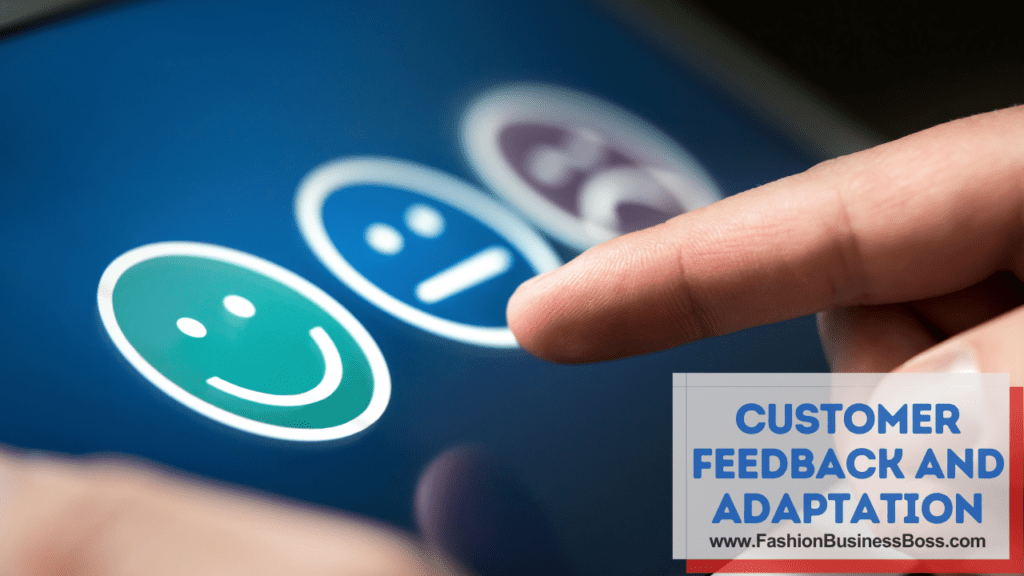Embarking on the path of creating your own clothing brand is a thrilling and fulfilling endeavor. Whether you have a unique fashion vision or a passion for design.
To begin your journey in starting a clothing brand, you’ll need a clear niche, market research, a strong brand identity, and a well-thought-out business plan. These essential first steps lay the foundation for your fashion growth.
In this article, we will walk you through the crucial first steps to get your clothing brand off the ground and running.
Define Your Brand Identity

Defining your brand identity is a fundamental step in establishing your clothing brand. To begin, you should identify your niche – that is, the specific market or segment you intend to target. Whether it’s casual wear, luxury fashion, sustainable clothing, or another category altogether, understanding your niche helps tailor your products and marketing to a particular audience, making your brand more relevant.
Next, choosing a brand name and logo that are both memorable and unique is essential. Your brand name and logo will serve as the visual representation of your clothing line. A well-crafted name and logo should reflect your brand’s values and style, making it easier for customers to recognize and trust your products.
Furthermore, crafting a compelling brand story is vital. Your brand story should emotionally connect with your audience, allowing them to understand the inspiration behind your brand and the mission driving it. This narrative creates a personal connection between your brand and customers, giving them a deeper appreciation for your clothing line.
By defining your brand identity through niche identification, a strong brand name and logo, and a compelling brand story, you establish a solid foundation upon which to build your clothing brand.
Read more about: How to Sell Clothes Wholesale: Your Roadmap to Growth
Market Research
Market research plays a vital role in the early stages of your clothing brand journey. It’s essential to comprehend your target audience and the dynamics of the fashion market. To do this effectively, embark on comprehensive market research by following these steps:
Begin by studying your competitors meticulously. This involves a deep dive into their products, marketing strategies, and customer base. By doing so, you can identify gaps in the market where your clothing brand could excel. Look for areas where competitors might be lacking or underserving their customers. This analysis helps you recognize potential opportunities for your brand to thrive.
Another critical aspect of market research is defining your target audience. This entails understanding the demographics, preferences, and behaviors of your ideal customers. Who are they? What styles do they prefer? What are their shopping habits? By answering these questions, you can tailor your clothing line and marketing efforts to align with your audience’s needs and desires.
Conducting thorough market research empowers you with valuable insights that inform your brand’s direction. It enables you to strategically position your clothing brand in the market, addressing gaps, and catering to the preferences of your target audience.
Business Plan and Legalities
Crafting a detailed business plan is a pivotal step as you embark on establishing your clothing brand. This plan serves as your roadmap, guiding you toward your brand’s objectives, financial management, and strategies for growth. Within this plan, you must also address critical legal aspects. Here’s how to approach it:
One of the initial legal decisions to make is choosing the right business structure. You can opt for a sole proprietorship, which means you are the sole owner, or consider forming a Limited Liability Company (LLC) or a corporation. Each structure has its own implications for taxation, liability, and operations, so it’s crucial to select the one that aligns with your brand’s needs and goals.
Safeguarding your brand’s identity is essential. This involves trademarking your brand name and logo to secure your intellectual property rights. By doing so, you protect your unique brand identity from potential infringement.
Ensure that you meet all the necessary legal requirements by obtaining the appropriate permits and licenses. These permissions vary depending on your location and the nature of your business. It’s essential to adhere to these regulations to operate your clothing brand legally and without any legal complications.
Sourcing and Production

Choosing dependable suppliers and manufacturers is a critical step in establishing your clothing brand. This process involves two key aspects:
Your clothing’s quality largely depends on the materials used. It’s essential to source high-quality fabrics and materials that not only meet but also align with your brand’s image and values. This ensures that your clothing not only looks good but also lives up to your brand’s standards.
Determining where and how your clothing will be manufactured is equally important. You must decide whether you’ll opt for local production or offshore manufacturing. This decision depends on various factors, including cost considerations and ethical concerns. While offshore production may offer cost advantages, it’s vital to assess the ethical implications and sustainability of such practices.
By carefully selecting suppliers and deciding on the production process, you ensure that the foundation of your clothing line is built on quality and ethical principles. This, in turn, contributes to the overall integrity and reputation of your brand, reinforcing the trust of your customers.
Read more about: How to Produce Your Own Clothes: Sewing Essentials and Beyond
Design and Prototyping
Bringing your clothing designs to life is a crucial phase in establishing your clothing brand. This involves two important steps:
Collaborate closely with designers and pattern makers to transform your design concepts into tangible prototypes. These prototypes serve as the initial physical representations of your clothing pieces. They allow you to assess the practicality and aesthetics of your designs in real life. This phase often involves adjustments and refinements to ensure that the final products meet your vision.
As you create prototypes, it’s essential to implement a robust quality control process. This step involves scrutinizing the prototypes to ensure they meet your predefined quality standards. Check for factors such as fabric quality, stitching precision, and overall craftsmanship. Maintaining a strict quality control process during prototyping helps identify and rectify any issues early in the production cycle, preventing potential problems with the final products.
By actively engaging in the design and prototyping process and emphasizing quality control, you can ensure that your clothing brand delivers products that not only align with your vision but also meet the high standards that your customers expect. This dedication to quality contributes to the credibility and reputation of your brand.
Branding and Marketing
Building a strong brand presence through effective branding and marketing strategies is pivotal for your clothing brand’s visibility and growth. Here’s how to go about it:
Begin by developing a professional website that includes an online store. This digital platform serves as a central hub for your brand, allowing you to reach a broader audience. Your website should showcase your clothing line, provide essential information, and offer a convenient shopping experience for customers.
Establishing a strong presence on social media platforms relevant to your target audience is crucial. Utilize platforms like Instagram, Facebook, or Twitter to connect with potential customers, share your brand’s story, and showcase your clothing. Engage with your audience through regular posts, responding to comments, and leveraging visual content to create a compelling online presence.
Generate engaging content to attract and retain your audience’s interest. This may include creating fashion lookbooks to showcase your collections, writing informative articles about fashion trends or clothing care, and producing videos that highlight your brand’s unique selling points. Consistent and high-quality content enhances your brand’s credibility and fosters a deeper connection with your customers.
Funding and Budgeting

Managing your finances is a pivotal aspect of launching your clothing brand, requiring attention to two essential components:
The initial step entails crafting a comprehensive budget that delineates your financial needs. This budget should encompass a spectrum of aspects, ranging from production expenses to marketing costs and overhead expenditures. Developing a meticulous budget grants you a lucid understanding of your financial prerequisites and how they align with your business plan.
After gaining clarity on your financial requirements, it’s imperative to delve into diverse funding options. These alternatives may encompass utilizing personal savings, pursuing loans, seeking potential investors, or contemplating crowdfunding campaigns. Each funding avenue presents its unique advantages and considerations. An in-depth assessment of these choices will aid you in determining the most appropriate approach to secure the requisite funds for your clothing brand.
By concentrating on budgeting and exploring funding alternatives, you can ensure that your clothing brand is financially well-prepared to fulfill its operational and expansion needs. This financial steadiness is a pivotal factor in the journey of establishing and perpetuating your brand.
Read more about: How to Open a Clothes Shop: Retail Revolution
Distribution and Sales Channels
Determining the distribution and sales channels for your clothing brand is a pivotal decision in your business journey. Here are the two primary avenues to consider:
Online Sales: One option is to leverage e-commerce platforms or establish your own website for online sales. E-commerce platforms like Shopify, WooCommerce, or Etsy provide ready-made solutions for selling your clothing online. Alternatively, creating your website offers more control over the user experience and brand presentation. Online sales offer a broader reach, allowing you to tap into a global customer base.
Brick-and-Mortar: Another avenue to explore is opening a physical store if it aligns with your brand’s strategy. A brick-and-mortar store provides a tangible space for customers to experience your clothing in person. This can create a more immersive and personal shopping experience. However, it involves additional considerations such as location, lease agreements, and in-store operations.
The choice between online and brick-and-mortar sales hinges on your brand’s vision, target audience, and resources. Many brands opt for a combination of both to maximize their reach and cater to diverse customer preferences. Ultimately, the distribution and sales channels you select should align with your brand’s objectives and customer engagement strategy.
Launch Your Brand
Launching your clothing brand is a pivotal moment in your entrepreneurial journey, and it necessitates careful planning and execution. Here are two critical elements to consider:
One approach is to contemplate hosting a launch event to generate excitement and garner attention for your brand. A launch event can take various forms, from an in-person gathering to a virtual experience. It serves as an opportunity to introduce your clothing line to the public, inviting potential customers to engage with your brand. Such an event can create a buzz and leave a lasting impression, especially when it aligns with your brand’s identity.
Equally significant is the execution of a well-conceived marketing campaign. A meticulously planned campaign is instrumental in reaching your target audience effectively. This involves deploying marketing strategies across diverse platforms, including social media, email marketing, and advertising. Your campaign should convey your brand’s story, values, and unique selling points, resonating with your intended audience.
By focusing on these two aspects, your brand launch can be a memorable and impactful introduction to the market. It sets the tone for your brand’s journey and initiates the process of engaging with your prospective customers.
Customer Feedback and Adaptation

After your clothing brand’s launch, the journey is far from over; in fact, it’s just the beginning. Collecting and valuing customer feedback is paramount. This feedback provides insights into how your brand is perceived and where improvements can be made. Actively seek feedback through surveys, reviews, and direct communication with customers. Listen to their comments and concerns, and use this information to adapt and refine your offerings.
Continuous improvement is essential in a dynamic market. As you gather feedback, make necessary adjustments to meet evolving customer preferences and market demands. This might involve refining your product designs, expanding your product line, or enhancing your customer service. The key is to remain agile and responsive to changes in the fashion industry and the expectations of your clientele.
The process of building a clothing brand involves an ongoing cycle of customer feedback and adaptation. By actively engaging with your customers and making necessary improvements, your brand can evolve, grow, and stay relevant in a competitive market.
Read more about: How to Make Your Own Custom Clothes: Sewing Chic and Unique
Conclusion
Starting a clothing brand is a challenging but incredibly fulfilling journey. By following these first steps and staying true to your brand’s vision, you’ll be well on your way to creating a clothing brand that resonates with your target audience. Remember, the fashion industry is ever-evolving, so stay adaptable and passionate about your craft.
Frequently Asked Questions

Q: How do I decide on a niche for my clothing brand?
A: To select a niche, conduct market research to identify gaps in the market and assess your personal interests and expertise. Consider what sets your brand apart from competitors.
Q: What legalities are involved in starting a clothing brand?
A: When starting a clothing brand, you’ll need to register your brand name and logo, choose a suitable business structure, and obtain the necessary permits and licenses to operate legally.
Q: How can I fund my clothing brand startup?
A: Funding options for a clothing brand include personal savings, loans, investors, or crowdfunding. Evaluate your financial needs and choose the option that aligns with your business plan.
Q: What’s the importance of quality control in clothing production?
A: Quality control ensures that your clothing meets the standards you’ve set for your brand. It helps maintain customer satisfaction and protects your brand’s reputation.
Q: How can I effectively market my clothing brand?
A: Effective marketing strategies include creating a professional website, establishing a strong social media presence, producing engaging content, and executing a well-planned marketing campaign to reach your target audience.
To learn more about starting your own clothing business, check out my startup documents here.
Please note that the contents of this blog are for informational and entertainment purposes only and should not be construed as legal advice. Any action taken based on the information provided in this blog is solely at your own risk. Additionally, all images used in this blog are generated under the CC0 license of Creative Commons, which means they are free to use for any purpose without attribution.

Meet Shawn Chun: Entrepreneur and Fashion Business Fan.
I’m a happy individual who happens to be an entrepreneur. I have owned several types of businesses in my life from a coffee shop to an import and export business to an online review business plus a few more and now I create online resources for those interested in starting new ventures. It’s demanding work but I love it. I do it for those passionate about their business and their goals. That’s why when I meet a designer or boutique owner at a craft fair, farmers market, retail location or anywhere else I see myself. I know how hard the struggle is to retain clients, find good employees and keep the business growing all while trying to stay competitive.
That’s why I created Fashion Business Boss: I want to help fashion business owners like you build a thriving business that brings you endless joy and supports your ideal lifestyle.

